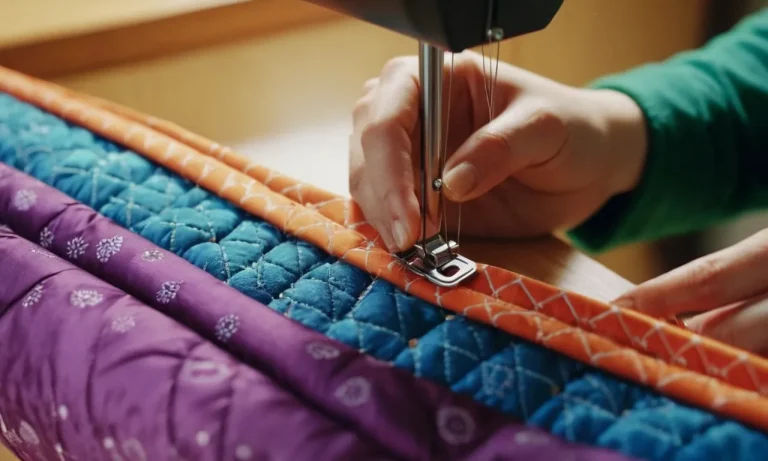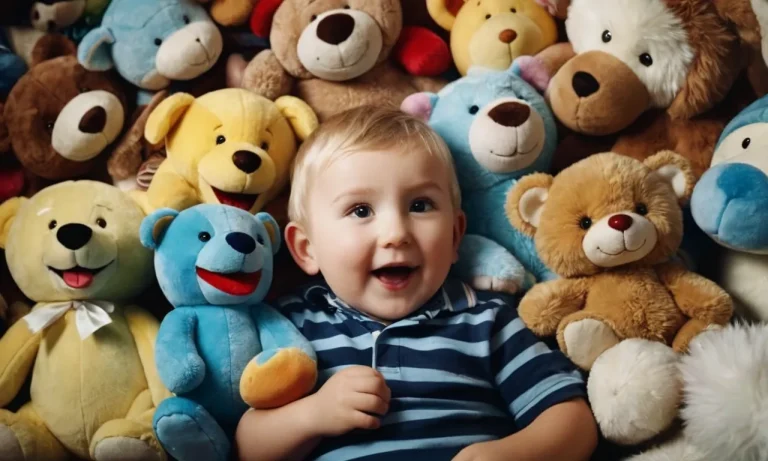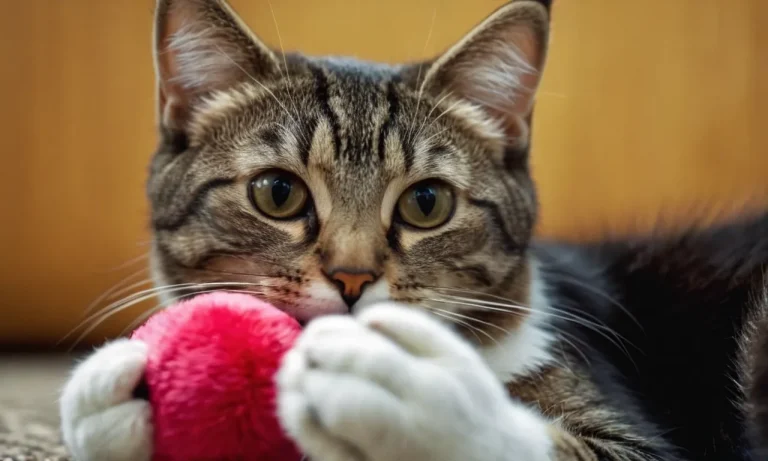Crocheting a stuffed animal may seem intimidating for beginners, but with the right instructions, tips and patterns it can be easy and fun. If you’re short on time, here’s the quick answer: start with an easy pattern for a basic shape like a ball or snake, use chunky yarn and a large crochet hook, and stuff as you go to make it easy.
In this comprehensive guide, you’ll learn everything you need to know to crochet your first stuffed animal. We’ll cover choosing the right yarn and hook, easy beginner patterns to start with, techniques for stitching and stuffing, and tips for adding details like eyes, noses, and other features to bring your creation to life.
Picking Out the Best Yarn and Crochet Hook
Opt for Chunky Yarn
When making stuffed animals, it’s best to use a chunky or bulky weight yarn rather than a lightweight yarn. Chunky yarns work up faster so you can complete your stuffed animal more quickly. The thicker yarn also creates a nice plush fabric that is perfect for hugging!
Some great chunky yarn options include:
- Lion Brand Wool-Ease Thick & Quick
- Bernat Softee Chunky
- Lion Brand Heartland
Stick to 100% acrylic or acrylic blend yarns rather than wool or cotton. Acrylic holds up better to stuffed animal play and holds its shape when stuffed.
Get a Crochet Hook Size J or Larger
For chunky yarn projects, you’ll need an equally chunky crochet hook usually between size J and P (6 mm – 15 mm). The right crochet hook size for your yarn should be printed on the yarn label. As a general rule, choose a hook 1 to 2 sizes larger than recommended.
With a larger hook, your crochet stitches will have better definition and drape nicely when stuffed. Smaller hooks used with chunky yarn result in tight, rigid fabric that doesn’t work as well for plushies.
Before starting your project, make a gauge swatch with your yarn and hook to ensure your stitches have good fabric quality.
Amigurumi Yarn for Smaller Projects
While chunky yarn is best for most stuffed animals, amigurumi yarn is a nice option for tiny toys like finger puppets or keychains. Good amigurumi yarn choices include:
- Lion Brand Lion Cotton
- Red Heart Super Saver
- BERNAT Pipsqueak
You’ll need a correspondingly small hook like a size C, D, E, or F (2.75 mm – 3.75 mm).
No matter what type of yarn you choose, always go for soft machine-washable yarns so your stuffed animal can withstand lots of love and still come out good as new from the wash 😊.
Starting With Simple Beginner Amigurumi Patterns
When just starting out with amigurumi, it’s best to begin with simple patterns that use basic stitches. This allows you to get comfortable with crocheting in the round and stuffing your work before moving on to more complex patterns.
Round Shapes Like Balls and Snakes
Balls and snakes are great starter shapes for amigurumi. These round shapes let you practice increasing and decreasing stitches to create 3D forms. All you need is a basic sphere or tube shape that you stitch seamlessly in the round. Then simply stuff them firm with fiberfill.
Some good beginner patterns are the Classic Crocheted Ball and the Snake Softie. Both use single crochet stitches and are quick, satisfying projects.
Mini Creatures and Food Items
Tiny amigurumi creatures and bite-sized food items are also suitable for novices. These miniature patterns use fewer stitches overall, so they work up faster. And their small size makes them simpler to stuff compared to larger pieces.
Fun, easy options include Farfalle Pasta, Strawberries, and the Kawaii Cupcake. Most use worsted weight yarn and basic stitches like single crochet.
Amigurumi Patterns for Complete Beginners
If you’re just learning to crochet altogether, it’s wise to start with amigurumi specifically designed for absolute beginners. These patterns will teach you essential techniques like the magic ring and invisible decreases.
Some great starter amigurumi patterns include the Jellyfish, Simple Owl, and Baby Chick. They use worsted weight yarn and familiarize you with amigurumi construction.
Crocheting and Filling Your Amigurumi
How to Crochet Tight and Even Stitches
Crocheting tight and even stitches is crucial for amigurumi to look neat and well-defined. Here are some tips:
- Use a smaller crochet hook size than recommended for the yarn. For example, use a 3.5mm hook with a light worsted weight yarn instead of the usual 5mm hook.
- Work in continuous rounds instead of turning at the end of each row to minimize gaps between stitches.
- Make sure to insert your hook through both loops of each stitch, not just the front or back loop.
- Maintain even tension by gripping the yarn between your pointer finger and thumb as you work. Relax your grip if the yarn starts to pinch.
- Count your stitches frequently to ensure you aren’t accidentally increasing or decreasing.
- Use a yarn needle to weave in ends as you go so they don’t come loose later.
Putting in some extra care as you crochet will result in a fabulously flawless stuffed animal that looks like it came right from a store shelf!
Stuffing in Sections for Easy Shaping
When stuffing amigurumi, it’s best to stuff different sections separately. This allows you to control the shape and ensure even stuffing distribution.
For example, when making a bear, stuff the legs firmly so they can stand straight. Use less stuffing in the upper body for a flexible waist. And fill the head fairly loosely so it can turn side to side.
Embroidering Details Like Eyes and Noses
Using Embroidery Floss for Facial Features
When making a stuffed animal, the eyes, nose, and mouth bring the whole piece to life. Embroidery with floss is the perfect way to add vibrancy and personality. Choose a darker color like black or deep brown for realistic-looking animal eyes.
For noses and mouths, pink or red embroidery floss gives a sweet touch. The great thing about embroidery floss is that it comes in so many fun shades to get creative with!
Where to Place Eyes, Noses and Mouths
Deciding where to embroider a cute face without an actual face for reference can seem tricky. The good news is there is no right or wrong place; however, traditional placement helps give your stuffed animal more realistic proportions.
- Eyes: Position about two thirds from the top of the head, leaving enough space for the nose and mouth below.
- Nose: Sew this cute detail directly in the center under the eyes.
- Mouth: Place slightly below the nose in the center or just off to one side.
Embroider the face details where you think they look best to give your crocheted friend the perfect personality. Have fun with experimenting! 😊
Sewing On Other Decorations
Facial features are essential, but don’t stop there when embellishing your stuffed animal. Other touches like bows, flowers, and mini pom poms accentuate the overall charm. Long stitches secure decorative touches without compromising flexibility and softness for cuddles.
Vary lengths and colors; random placements make animals look whimsical and lovable.
Making Amigurumi Easier for Beginners
Work in Continuous Rounds
When you first start an amigurumi project, it can seem tricky to crochet seamlessly in the round. But working in spirals instead of joining rows is essential for getting clean, professional results. The key is to use a stitch marker to note the beginning of each round.
Simply place a safety pin, scrap yarn, or purchased marker in the first stitch of the round. When you come back around, move the marker up to the first stitch again. This makes it easy to see where rounds start and stop.
Use Stitch Markers
Placing stitch markers at key points is another trick to make amigurumi less frustrating. Pop them between special stitches or symmetrical body parts like arms, legs, ears, etc. That way if you set your work down for a while, it’ll be simple to see exactly where you left off.
Stitch marker placement can also help ensure both sides match by allowing quick counting. And marking where eyes, noses, and other facial features will attach is a handy guideline while you stuff and shape the raw crochet.
Weave in Ends As You Go
Dealing with a tangled pile of yarn tails once a stuffed animal is finished is annoying (not to mention damaging to your neat handiwork!). Get into the habit of weaving in ends as they occur instead. For example, tie off and conceal a color change several stitches early, or work the tail strategically into the body with a crochet hook before moving on.
Paying attention to loose ends throughout the amigurumi process means you can start petting and playing with your new friend right away when that last stitch is complete – no tedious finishing work required!
Armed with these three simple tips, brand new crocheters can feel more self-assured tackling adorable stuffed animals and toys. Little tricks like working continuously, marking key points, and weaving as you go establish good habits from day one.
And building a strong foundation of amigurumi basics is invaluable as you progress to more intricate and exciting stitchwork down the road. Whether whipping up toys for tots or decorative figurines for grownups, you’ll create countless smile-inducing masterpieces in no time.
Conclusion
With the right supplies, an easy pattern focused on basic shapes, and some key techniques for stitching, stuffing and adding facial features, crocheting an adorable stuffed animal is totally doable even for complete beginner crocheters.
Just take it step-by-step and before you know it you’ll have a custom cuddly creation.







